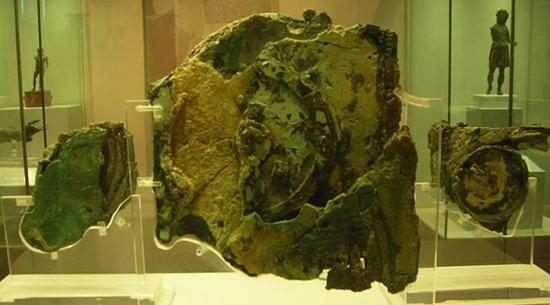
10 Mysterious Out-of-Place Artefacts Discovered Throughout History
By Debra Kelly, Urban Ghosts Media, 28 January 2015.
By Debra Kelly, Urban Ghosts Media, 28 January 2015.
Simply put, an out-of-place artefacts is something that’s found somewhere that makes absolutely no sense whatsoever. There’s no explanation whatsoever as to why they should have been found where they were found, and, perhaps more importantly, there’s absolutely no explanation as to how they could have gotten there. Sure, there’s a lot of theories that go along with each one of these, but who’s to say for sure?
10. The Calixtlahuaca Head
Image: Romeo H. Hristov
What It Is: In 1933, a bizarre artefact was found during the excavation of a burial tomb at Calixtlahuaca in Mexico’s Toluca Valley. The tomb, dated to between 1476 and 1510, contained a number of the usual, culturally appropriate burial offerings, along with a terracotta head that looked very, very out of place. The head had a distinctly Roman feel, but it was rather surprisingly forgotten until 1961. It was only then that an Austrian anthropologist took another look at the artefact and declared that it not only had all the features of belonging to the Hellenistic-Roman art movement, but that it also could be dated to around 200 AD - an age and interpretation that has been supported by a number of other archaeologists. The style of the hair and the beard are of distinct Roman fashion, and fashion that had largely disappeared after the third century.
The Theories: Just when the two sides of the Atlantic Ocean first came into contact with each other has long been up for debate, and the head seems to prove that it’s at least much, much earlier than originally thought. It’s known that Cortez didn’t conquer the area until 1521, meaning that when the tomb was sealed, they were still considered a pre-Hispanic culture. Thermoluminescence dating has established that the head dates from anywhere between 870 BC and 1270 AD, but there is other precedents for tombs and burial chambers containing artefacts that are much, much older than the burial itself.
That being said, it’s still not clear-cut, solid proof of European contact before Spanish colonization. There’s no photographs of the head in the tomb where it was found, and there’s no documentation of the head being processed along with other artefacts from the same dig. It’s still not a guarantee that the head wasn’t just simply planted to stir up some attention around the dig, or that the dating was wrong and it was introduced to the area after the Spanish had begun colonizing the area.
9. The Stone Spheres of Costa Rica
What They Are: The stone spheres are exactly that - stone balls created with incredibly accurate precision. They’re so precise, in fact, that many claim they couldn’t possibly have been made with the simple tools that were available at the time they were created, which has been estimated at sometime between 500 and 1500. They range from 0.7 meters (2.3 feet) to 2.5 meters (8 feet) in diameter, and are a relatively new discovery. The stones are mentioned briefly in documents from the late 19th century, but the first real records of them date only to the 1930s. Tragically, it’s not known how many of the spheres there once were, as some were accidentally destroyed by the heavy equipment used by those who first found them (when clearing trees for farmland), and others were blown up by people hoping to find gold or treasure inside them. About 300 now remain, with the largest ones weighing a staggering 16 tons.
Each of the four sites where the stones have been found have been added to the UNESCO World Heritage List.
The Theories: The stone spheres have been tied to a number of different civilizations, from Atlantis to mysterious, extraterrestrial societies. One of the most popular of the extraterrestrial theories states that they’re navigational aids that are somehow related to other megaliths around the world.
Some of the stones aren’t as perfectly smooth or spherical as claimed; researchers have found some that still have trace marks of the tools that were used to create them. They were made - quite literally - by banging two rocks together. What’s not known is why they were made. The civilization that created them pre-dates the Spanish conquest of the area; they left no written records, paintings, carvings, nothing to indicate why the stone spheres were so important to them or what legends and mythology had grown up around them.
8. Baigong Pipes
Image: The Cosmos News via YouTube
What They Are: The Baigong Pipes were discovered in 1996 by an man named Bai Yu and named for their location - Mt. Baigong. Mt. Baigong is a strangely shaped mountain with what’s said to be a pyramid on top; within the mountain are a series of caves. Some of the caves have collapsed and are impassable, but other caves can be explored - and inside them are what appears to be a pretty wild system of pipes. They range from almost too tiny to see to 16 inches in diameter, and those who see them state that they’re quite clearly very purposefully laid. They appear to be made from metal, run very, very deep into the rock, and connect the cave system to a nearby lake.
Various scientists have examined the pipes, and have been able to determine a few things. They’re 92 per cent common minerals and the remaining 8 per cent of their makeup is unknown. Thermoluminescence testing can tell how long it’s been since a substance has been subjected to light or heat, and in the case of samples from the pipes, it’s been between 140,000 and 150,000 years.
Image: The Cosmos News via YouTube
The Theories: Aliens. Based on their age, it’s been put forward that the Baigong Pipes were installed by some race of ancient aliens as some sort of plumbing system. The theory gained so much momentum that a radar dish was installed on the top of the mountain, just in case they were ever coming back.
More mainstream scientists say they’re simply tree roots. At one time, the entire area was a giant lake. It took thousands of years, but over time, the movement of the earth gradually lifted the basin to the elevation it sits at now - about 9,185 feet, or 2,800 meters. As the land lifted, the tree roots that had been growing down through the mountain and into the caves began to fossilize; eventually, the organic centres of the roots decayed and the pipe-like outer structures remained.
7. The London Hammer
Image: paleo.cc
What It Is: In 1934 (or 1936), Max and Emma Hahn were walking near their London, Texas home, when they came across what seemed to be a piece of wood sticking out of a rock. They didn’t think much of it until later, in 1947, when their son chipped away at the rock and broke it open to reveal the head of an iron hammer. The head is about 6 inches long, tested as being made from iron, and largely free of rust.
The Theories: The London Hammer has long been one of the star exhibits of the Creation Evidence Museum. According to Creationists, the hammer is a pre-Flood discovery - it was, the Hahns stated, found in rocks that have since been dated as being between 400 and 500 million years old. Since the hammer clearly isn’t 400 to 500 million years old, that means the dates for the rock formation it was buried in must be wrong.
The circumstances in which the hammer was found are questionable. There’s no actual evidence that it was found where the Hahns say it was found, as no pictures or other documentation was ever done about the removal of the hammer from its supposed resting place. There’s another theory, too. Even if everything the Hahns say was legit, there’s a process by which ancient minerals can harden around a relatively new object - like a hammer dropped by a Texas miner a couple of hundred years ago. Geologists would be able to tell the difference, but the museum that currently owns the artefact isn’t allowing testing to be done.
6. The Ica Stones
What They Are: In 1966, physician-turned-archaeologist Dr. Javier Cabrera opened the Museo de Piedras Grabadas to display literally thousands of stones that he found in a cave near Ica, Peru. The Ica Stones were engraved with a variety of scenes that seemed to go against every single thing that has been scientifically accepted about our history. According to Cabrera, the stones were engraved by an ancient South American civilization and left in the cave as a sort of history book. Scenes carved into the stones depict the use of telescopes, people performing advanced surgeries, and others using technologies like flying machines. Other stones show humans using what appears to be dinosaurs as beasts of burden, and other stones show them fighting the dinosaurs.
It’s not known how many of these stones exist, but they number in the thousands. Cabrera (portrait seen in photo below) says that he and his team of locals have found about 50,000 of them, while they remain undocumented and strewn across the world. The cave that he says he found them all in has never been identified.
The Theories: Aliens. Some think that the stones are proof of an ancient alien civilization who left the stones behind when they suddenly had to leave the planet.
There’s also a group that argues the Ica Stones - and their depictions of men alongside fantastic beasts - are proof that the myths and legends of the world are more than just myths or legends. If this South American society has records of men fighting massive flying thunderbirds, there must be something to the idea that the stories that have been passed down through generations are history rather than myth.
Creationists have also pointed to the stones as proof of their beliefs; specifically, the idea that humans and dinosaurs existed side by side.
The problem really starts to come in when we try to look at the stones as a whole. In 1975, a Peruvian farmer was arrested for selling the stones to tourists. A little digging revealed that a couple of locals had perfected the art of engraving the stones and making them look real - a little carving, and then leaving them to weather in their chicken coop gave them the perfect, aged appearance. They admitted finding their source materials from pop culture and comic books.
However, science is also pretty sure that some of the stones are real. There are some records of some of the stones being brought back to Spain in the 16th century, and not all the carvings depict amazing scenes like brain surgery.
In fact, many of the scenes that are said to be dinosaurs or fantastic beasts are completely up for interpretation. Some of the so-called dinosaurs aren’t engraved, but created from stains on the ancient rocks. So far, the scientific response to the idea of the Ica Stones has been decidedly mixed.
5. The Lake Winnipesaukee Mystery Stone
What It Is: In 1872, workers were digging holes for fence posts in the area of Lake Winnipesaukee, New Hampshire. In one of the holes, they found a fist-sized, egg-shaped rock with a series of intricate carvings that appear to depict various Native American images: a teepee, an ear of corn, a face. There’s also two holes that have been drilled into it.
The Theories: Some have put forth the idea that the rock is of Celtic or other European origin, and that it’s actually a thunderstone. Thunderstones were thought to be stones given to people by the gods, and they were put in homes to keep evil creatures away. They got their power from storms, and were thought to be especially potent against the demons that could steal the soul of an unbaptized child, drive an animal mad or sour a cow’s milk.
Area historians have suggested that it might have been made to symbolize an event of monumental importance in Native American culture. What’s still absolutely unclear is how the holes in it were made - they seem completely smooth, as if made by power tools. Because the exact spot the so-called Lake Winnipesaukee Mystery Stone was found in was never documented, it’s also impossible to tell just what else may have been buried in the same place.
4. The Dendera Light
What It Is: The Dendera Light isn’t an actual light, per se, but it’s a stone relief found at the Temple of Hathor in Dendera, Egypt. On the walls of a crypt beneath the temple, there’s a peculiar mural that some have claimed shows definite proof that the ancient Egyptians who built the temple had access to some pretty impressive technology. The relief seems to show several people holding what appears to be oversized light bulbs, with a bright spotlight emanating from them. The crypt, one of five similar rooms and described as accessible only through a secret opening, is thought to have once been a storehouse for the temple’s most prized possessions - long gone.
The Theories: Aliens. Supports of the idea that the ancient gods were actually aliens that bestowed some of their technologies upon the human race point to the murals as proof that they had access to some sort of electrical and light technologies, ones that were probably once housed in the crypts beneath the temples.
The more mainstream idea is that the murals, at a glance, seem to show light bulbs and electricity is because that’s what our modern minds see. There’s another interpretation for the murals, and it’s one that’s right in line with ancient Egyptian mythology. The son of Hathor is commonly depicted as taking the form of a snake, which explains the “rays” that seem to come from the light-bulb - it’s actually him in snake form. According to the story of Horus’s birth, he was born from a lotus flower that bloomed as the sun rose on the first day of the new year. That’s the light-bulb-like apparatus they’re holding, with one of their gods bursting forth from it.
3. The Maine Penny
What It Is: In 1957, amateur archaeologist Guy Mellgren was conducting a dig along the Maine Coast. He came across an odd coin; further examination of the coin seemed to confirm that it was an ancient Norse coin that dated back to the 11th century. It was identified as being minted during the reign of a king named Olaf Kyrre, between 1065 and 1080.
The Theories: Just who made it across the Atlantic Ocean to the New World and in what order they did it has long been up for debate, and at a glance, it seems like the presence of the Norse coin establishes the Vikings as a front-runner. The site of the dig was dated between 1180 and 1235, making it not unlikely that the coin would have been in circulation at the time of the other artefacts. The coin is, however, the only Norse item found at the site - which yielded about 30,000 different artefacts. Because it was originally misidentified as a coin from Britain, no particular note was taken of when it was first excavated. There’s no records of precisely where it was found, or photographs of it being uncovered. Some researchers believe that the coin was planted as a hoax, or that it was simply part of a vast trade network that had found its way to the site through other means.
2. The Iron Pillar of Delhi, India
What It Is: An iron pillar, weighing 6.5 tons and standing 7.3 meters (almost 24 feet) tall, stands in Delhi. It’s inscribed with text and has intricate scrollwork at the top; according to the inscription, it was erected in honour of Vishnu during the reign of Gupta King and was originally erected sometime between 375 and 413. While it’s now located in the centre of the Quwwatul Mosque, it was only moved there about a thousand years ago, from somewhere in Madhya Pradesh. Where it was moved from, how (and why) the 6.5 ton pillar was moved, and why it hasn’t rusted at all in 16 centuries had long baffled historians, archaeologists and chemists alike.
The Theories: No one really has the foggiest idea what the answers to some of the questions could possibly be, but one mystery about the giant pillar has been solved. According to legend, it’s extremely good luck for a person to be able to stand with their back against the pillar and be able to touch their fingertips on the other side. Countless tourists and visitors have tried this, and it’s led to the beginning of rust on the bottom of the pillar. Metallurgists at a Kanpur college studied the pillar, and found an extremely thin, protective layer that’s formed on the pillar. Created from iron, hydrogen and oxygen, the layer formed because of the metal’s high phosphorus content - a by-product of traditional smelting methods - and protected it from rust over the centuries.
We’re still waiting for answers to the rest of the questions, but weirdly, the pillar in Delhi isn’t the only strange iron pillar out there. Another massive, rust-free iron pillar, known as the Iron Man in the Kotternforst, stands in Germany. Made from pig iron, the strangely lonely pillar stands where it has for centuries - also rust-free.
1. The Antikythera Mechanism
What It Is: The Antikythera Mechanism is a brilliant piece of computing technology that was accidentally discovered in an ancient shipwreck near Crete. Imaging and dating has put its creation at about 150 to 100 BC; at its most basic, it’s a device created from a system of gears and wheels that track the position of the sun and moon, keep track of the phases of the moon, predicts eclipses, and tracks the movement of the zodiac through the sky. It has 80 separate pieces, including gears, dials, hands, and pieces of casing.
The Theories: Discovered in 1901, the early precursor to the computer has long been the flagship of evidence that there was once a technologically advanced civilization on earth - probably one that was wiped out in some kind of catastrophe. It’s one of the most famous pieces of evidence that’s often used in arguments for Atlantis, or the presence of extraterrestrials on earth. Since nothing like it has ever been found again, that’s seen as giving credence to the idea of a catastrophic event.
With new computer technology, we’re finally able to start unravelling the mysteries behind this ancient computer. Recovered along with the object itself was its case; high resolution scanning has allowed researcher to reconstruct just what was on the case. The motion of the gears has now been identified, and it was actually invented by an astronomer named Hipparcus of Rhodes in the 2nd century BC. They’ve even found another small, easily overlooked inscription that allows the device to also keep track of the Olympic Games.
While the mechanism is still holding onto some of its secrets, researchers are now beginning to suspect that, thanks to the identity of the movement-maker, it was part of a horde of objects looted from Rhodes. Chances seem good that it was on its way to Rome when the ship that it was on sank. And as for it being one of a kind? That’s explained by the idea that the bronze that it - and others like it - were made from was very often melted down and recast into other objects.
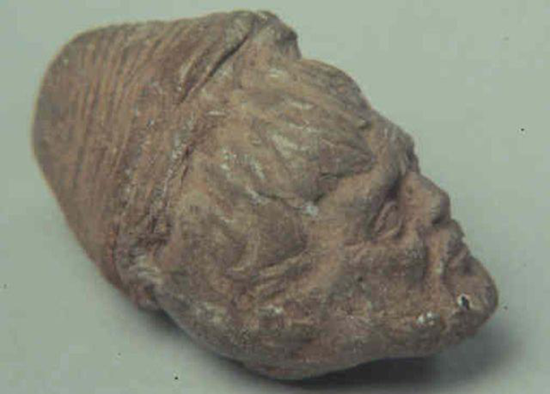
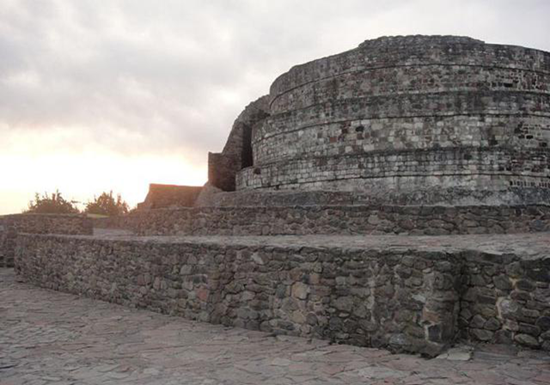




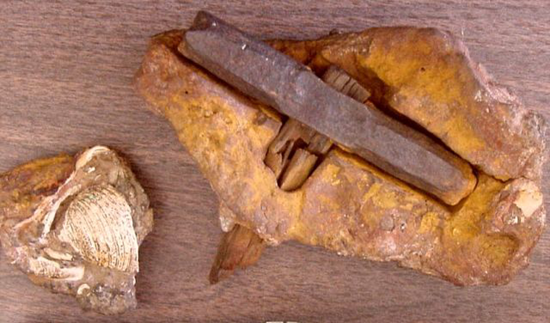

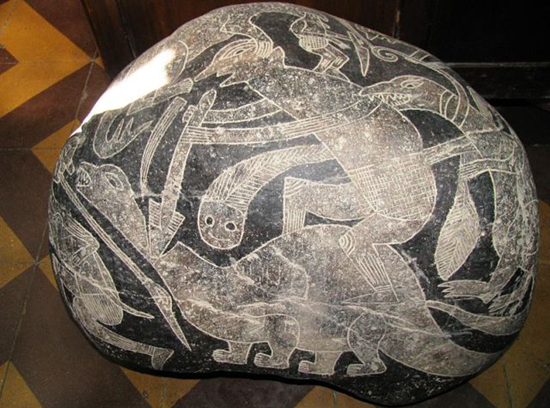
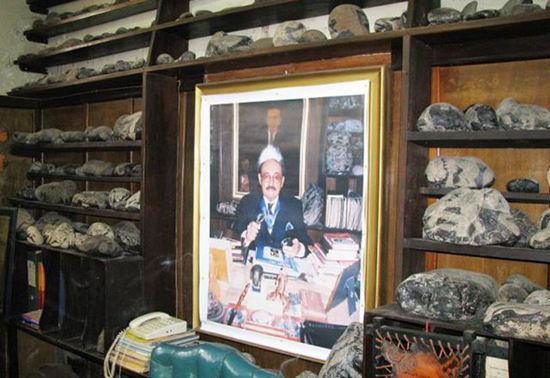
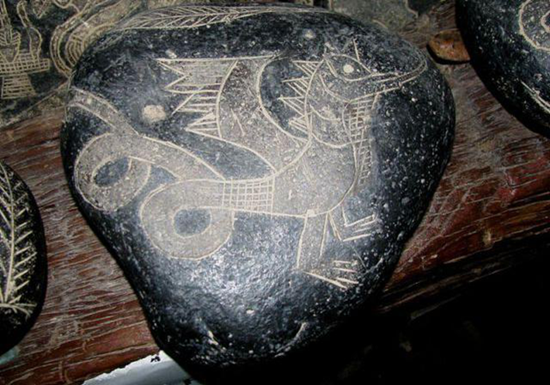
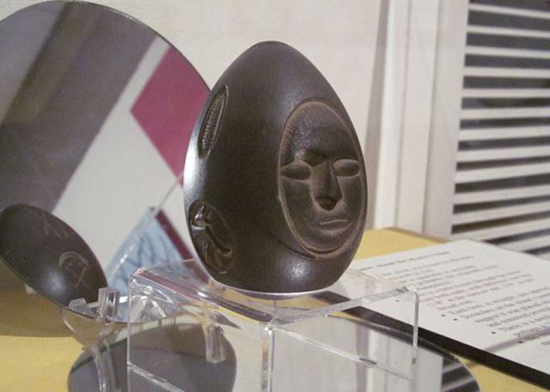

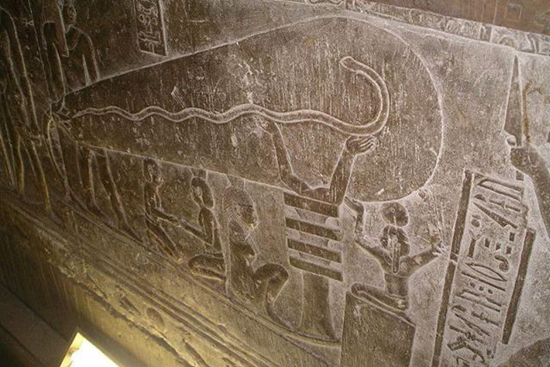
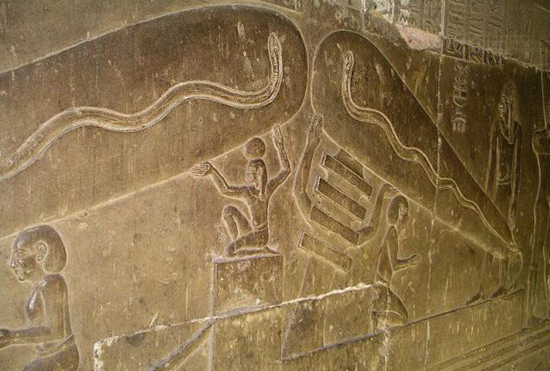
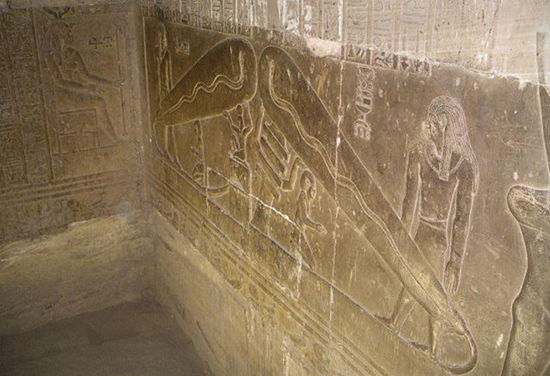
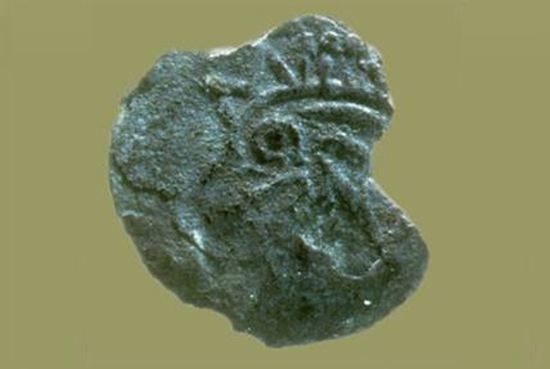
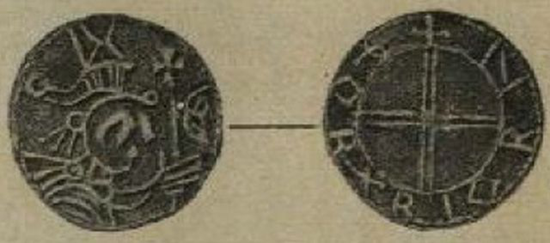



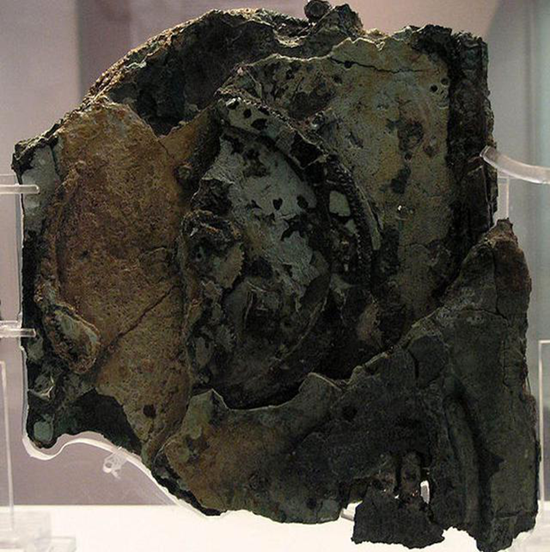

No comments:
Post a Comment
Please adhere to proper blog etiquette when posting your comments. This blog owner will exercise his absolution discretion in allowing or rejecting any comments that are deemed seditious, defamatory, libelous, racist, vulgar, insulting, and other remarks that exhibit similar characteristics. If you insist on using anonymous comments, please write your name or other IDs at the end of your message.